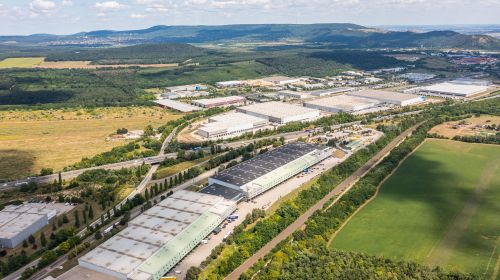Already hanging up the tinsel
Stock market reportThe strength of the global economy has been heartening and stock-brokers have not been unresponsive to this. Things are good across the Atlantic and are even better in the eurozone. The forward indicators that reflect the mood of investors have been the highest for the last seven years. Orders and employment are growing, mostly in the largest European economies, Germany and France, which have recently seen only sluggish economic growth. In October the European Central Bank announced that it would continue buying bonds, i.e. pumping money, into the eurozone economy, on a slightly smaller scale but for longer – until autumn 2018. The quantitative easing of the money supply (the purchasing of bonds by central banks) which started after the crisis of 2007 and 2008 will be continued in the eurozone even when interest rates go up. The signal is clear and has been taken on board by the markets: the central bank of the eurozone will continue to push for economic growth. The same is the case in the US, where the new head of the Fed has pledged to maintain the low cost of money, thus boosting the stock exchanges over there – although it has to be said that the American bourses generally don’t need any help, unless this is aimed at cooling them down. In early November the Dow Jones surpassed its historic peak again. The data cited by experts suggest that a correction in the US is increasingly on the cards, although this would actually be less of a correction and more of an opportunity to make purchases at the end of the year. Apart from the economy itself, with its high consumption and low unemployment, there could also be some stimulus for growth coming from the White House. The Trump administration is to introduce long-awaited tax reforms – reducing corporate tax to their lowest ever level (CIT 20 pct) while the number of tax brackets will also be reduced from seven to four. In Poland the economic situation is also better than just good – according to preliminary figures, the economic growth in Q3 amounted to 4.7 pct GDP y-o-y, the highest seen since 2011. The fact that the European Commission has increased its growth forecasts for Poland once again (to 4.2 pct in 2017) came as no surprise, after Global Bank, the rating agencies (including Moody’s) and large investment banks (e.g. JP Morgan) did the same. Projects driven by EU funds are finally to be launched. The budget situation is also quite good, even though those in power are already looking to secure future revenue by announcing their own reforms to the tax system. The mood on the WSE has been positive, but it seems unlikely that the WSE record will be broken, despite having been close to this level for several months now. The blue chip index has also been fluctuating at around the level of 2,500 points for the last few months. The construction index has been falling back for a couple of months, having lost almost 20 pct since August. Since the beginning of the year it has only slipped back by 5 pct, but it should be borne in mind that for a long time it was one of the growth-leaders of the sub-indexes. Things are somewhat different when it comes to the developers’ index, which has grown by 12 pct since the beginning of the year, although last month saw a decrease of a few per cent. According to the rynekpierwotny.com website, the 19 leading developers listed on the WSE enjoyed an average increase in sales of 26 pct y-o-y (Q3 data only). The greatest sales growth was registered by Inpro, Lokum Deweloper, Marvipol and Polnord. Translating this into its financial results for the first three quarters of this year, Inpro’s profits grew by 11 pct, while Lokum Deweloper saw a decrease in profit by 68 pct (attributed by the company to substantial investment). Polnord and Marvipol, however, had not published their results by the time of the writing of this report. It is worth noting that the Polish Financial Supervision Authority has consented to the splitting of Marvipol into two companies. One will be Marvipol Development, taking on the group’s development business (with the other being BAH, which will take on the business of selling luxury cars). Shareholders will receive one share in the newly-established companies for each share of Marvipol. Coming back to the Q3 results, in the first three quarters Dom Development generated 83 pct higher profits y-o-y and its highest ever sales for Q3. J.W. Construction had worse results, in terms of revenue as well as profit – according to the company this is all down to the scheduling of its projects and the availability of completed apartments.
Neighbours making up
This time the WIG20 was left behind by its regional counterparts – as it was a better month for the PX50 in Prague as well as the BUX in Budapest. The WIG20 is still in the lead in terms of growth for the year so far, but the BUX has been closing the gap. Central European economies have been exhibiting robust growth, which is certainly giving a boost to the stock exchanges. In Q3 GDP increased by 5 pct in the Czech Republic and 3.8 pct in Hungary. However, Romania is the growth leader with 8.8 pct, up from an estimate of less than 6 pct earlier this year.





















































